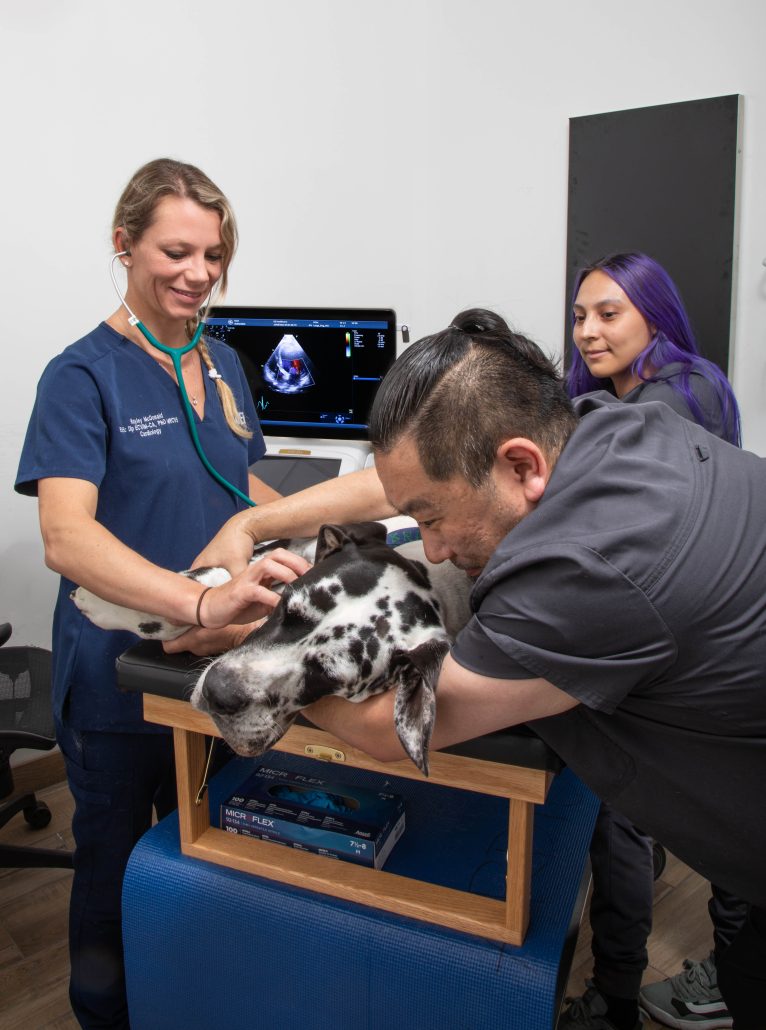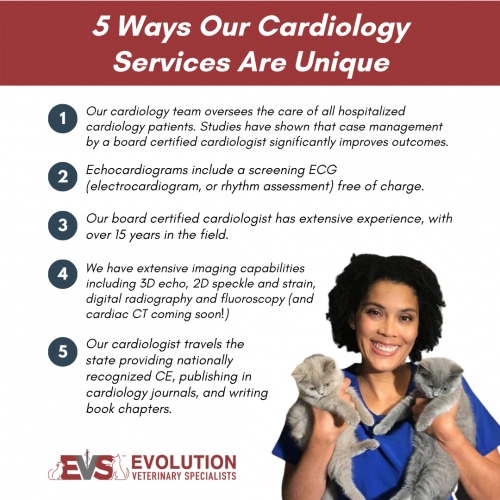Complete Preparation Tips Before Scheduling CT Scans For Animals}
Wiki Article
The Function of Ultrasound and CT Check in Modern Veterinary Practices: Insights From Experienced Professionals
In modern vet techniques, ultrasound and CT scans significantly boost analysis capacities. These imaging techniques provide critical insights into animal wellness, directing treatment decisions. Experienced experts identify the one-of-a-kind advantages of each modality. Ultrasound offers real-time analyses, while CT scans provide complex anatomical details. Understanding their roles and applications elevates important questions about their influence on patient end results and the future of vet diagnostics. What insights can be gained from their integrated usage?Comprehending Ultrasound in Veterinary Medication
Ultrasound is a vital diagnostic device in vet medication, supplying a non-invasive method to picture interior frameworks. This imaging method employs high-frequency acoustic waves to produce real-time photos of cells and body organs, enabling vets to analyze conditions without surgical treatment. Common applications consist of evaluating the heart, liver, kidneys, and reproductive body organs, in addition to keeping an eye on pregnancies.The procedure is relatively fast and can be done in different setups, making it an available choice for vets. Unlike radiography, ultrasound gives comprehensive details regarding soft tissues and blood circulation, which is important for accurate diagnoses.Veterinary experts depend on ultrasound to discover abnormalities such as lumps, cysts, and fluid buildup. Its capability to assist biopsies and other treatments better improves its energy in professional practice. By supplying a effective and risk-free means to analyze internal composition, ultrasound has actually come to be a foundation of modern-day vet diagnostics.
The Advantages of CT Checks for Pet Diagnostics
CT checks deal significant advantages in veterinary diagnostics by supplying boosted precision in recognizing internal problems (Board Certified Veterinary Cardiologist). As a non-invasive imaging strategy, they guarantee the safety and comfort of pets during evaluations. On top of that, CT scans assist in a thorough evaluation of internal frameworks, allowing for a lot more reliable therapy planningEnhanced Analysis Accuracy
Advancements in imaging modern technology have actually significantly boosted analysis precision in vet medicine, especially through making use of CT scans. These scans provide detailed cross-sectional pictures of an animal's internal structures, permitting veterinarians to identify irregularities with accuracy. The high resolution and three-dimensional abilities of CT imaging assist in the discovery of conditions such as lumps, cracks, and interior bleeding that may be missed out on with conventional imaging approaches. Additionally, CT scans can assist in pre-surgical preparation by providing a comprehensive sight of physiological relationships. This level of detail not only enhances the precision of medical diagnoses but also aids in customizing efficient treatment strategies. Consequently, the assimilation of CT modern technology into vet practices is transforming the landscape of animal medical care, enhancing end results for people.Non-Invasive Imaging Strategy
The intro of non-invasive imaging methods has actually transformed animal diagnostics, with CT scans emerging as a noticeable device in vet techniques. These scans supply high-resolution, cross-sectional photos of an animal's internal structures, permitting veterinarians to evaluate intricate problems without the need for invasive treatments. The benefits of CT scans include their capability to find tumors, cracks, and interior bleeding with amazing accuracy. Additionally, they facilitate the evaluation of soft tissues and body organs, enhancing diagnostic capacities. The speed of CT scanning allows quick decision-making, which is vital in emergency situation situations. By minimizing tension and pain for the pet, CT scans add to an extra humane approach to diagnostics, eventually boosting treatment end results and progressing vet treatment.Comprehensive Internal Evaluation
A thorough internal assessment is necessary for accurate medical diagnosis and reliable therapy in vet medication. CT checks deal significant advantages hereof, giving thorough cross-sectional photos of an animal's interior frameworks. This sophisticated imaging method enhances visualization of intricate physiological regions, allowing vets to recognize problems such as growths, fractures, and inner blood loss with better precision. In addition, CT scans help with the evaluation of conditions that may be challenging to identify through standard approaches. The rate and precision of CT imaging likewise add to prompt interventions, enhancing client results. As vet methods significantly include CT technology, the advantages of extensive internal evaluations end up being noticeable, enhancing the value of this device in modern-day veterinary diagnostics.Comparing Ultrasound and CT Imaging Techniques
While both ultrasound and CT imaging serve vital duties in vet diagnostics, each method uses unique advantages and restrictions that can affect professional decision-making. Ultrasound is particularly valued for its real-time imaging abilities, allowing veterinarians to observe dynamic physical procedures. This strategy is non-invasive, portable, and does not involve ionizing radiation, making it a safer choice for both medical professionals and pets. Ultrasound may have constraints in imagining particular anatomical structures or deep tissues.Conversely, CT imaging provides comprehensive cross-sectional sights of the body, permitting for exact localization of abnormalities. It masters reviewing facility organs and frameworks, particularly in the thorax and abdomen. Nevertheless, CT scans need sedation or anesthesia oftentimes and involve direct exposure to ionizing radiation. Eventually, the option in between ultrasound and CT depends upon the certain scientific circumstance, the area of interest, and the seriousness of the analysis demands.Situation Studies: Effective Medical Diagnoses Through Imaging
Situation studies illustrate the significant this website enhancements in analysis precision achieved with sophisticated imaging modern technologies like ultrasound and CT scans in veterinary practices. These innovations not just improve the detection of different conditions yet likewise facilitate prompt and effective therapy strategies. Examining particular situations can highlight the transformative effect of these imaging techniques on veterinary medication.Analysis Accuracy Improvements

Imaging Modern Technology Advancements
As veterinary imaging modern technology remains to advance, its influence on analysis capabilities ends up being progressively noticeable. Current study highlight the effective application of innovative ultrasound and CT check strategies in recognizing intricate conditions. A veterinary clinic utilized high-resolution CT scans to detect an uncommon kind of lung cancer cells in a pet, which standard imaging had actually missed. Likewise, an ultrasound examination exposed an abdominal mass in a cat, triggering prompt surgical intervention and a favorable outcome. These developments not only improve analysis accuracy yet additionally enable veterinarians to design targeted therapy plans. By leveraging cutting-edge imaging modern technologies, vet professionals are markedly boosting individual care, causing much more effective monitoring of various wellness conditions in pets.
The Function of Imaging in Emergency Vet Treatment
Imaging plays an important role in emergency vet treatment, offering veterinarians with important details required to make quick, educated decisions. In immediate situations, techniques like ultrasound and CT scans make it possible for practitioners to promptly evaluate a pet dog's interior frameworks, identifying important conditions such as interior blood loss, cracks, or organ irregularities. These imaging methods enable real-time assessments, promoting timely interventions that can be life-saving. Ultrasound is indispensable for evaluating soft tissue injuries and conditions like liquid buildup, while CT checks deal thorough images of complex anatomical structures, vital for detecting injury situations. The rate and precision of these imaging strategies boost the vet's capacity to design reliable therapy strategies, ensuring the very best possible results for their individuals. The combination of advanced imaging modern technologies right into emergency veterinary techniques is not only useful yet significantly needed, as it enhances diagnostic capacities and boosts general pet treatment during crucial moments.
Training and Proficiency in Vet Imaging
Sophisticated imaging techniques such as ultrasound and CT scans are essential for reliable veterinary care, the successful execution of these technologies heavily depends on the training and experience of veterinary professionals. Efficient use imaging tools requires detailed knowledge of anatomy, pathology, and the principles underlying each technique. Vet specialists must go through specific training to precisely analyze imaging outcomes, which is vital for diagnosing conditions and preparing treatment.Certifications and proceeding education and learning in vet imaging boost the skills of specialists, enabling them to stay updated with technological improvements. Cooperation in between vets and radiologists usually leads to improved diagnostic precision, as experts can supply understandings into complicated cases. Additionally, practical experience in dealing with imaging equipment fosters self-confidence in its application. Inevitably, the top quality of vet imaging solutions is straight correlated to the level of training and expertise possessed by the experts using these essential diagnostic devices.Future Fads in Diagnostic Imaging for Animals
With the quick innovations in modern technology, vet analysis imaging is poised for significant evolution in the coming years. Emerging fads show a change in the direction of more accessible and portable imaging modalities, such as portable ultrasound gadgets, which might enhance field diagnostics. Additionally, the integration of expert system is anticipated to reinvent picture evaluation, enabling quicker and extra precise interpretations of results.Moreover, improvements in 3D imaging methods and computed tomography will offer vets with more comprehensive sights of animal makeup, resulting in improved therapy strategies. Virtual truth modern technology might likewise play a function in medical preparation and education, giving veterinarians a distinct perspective recommended you read on intricate cases.As telemedicine remains to expand, remote examinations assisted in by diagnostic imaging will certainly become extra common, permitting experts to assist family doctors in real-time. Generally, these trends are readied to improve the effectiveness and performance of vet care, inevitably enhancing animal end results.Often Asked Inquiries
Just How Much Do Ultrasound and CT Scans Price in Veterinary Facilities?
The costs of ultrasound and CT scans in veterinary clinics normally vary from $300 to $1,500, depending upon factors such as place, center kind, and certain treatments required for the pet's medical diagnosis and therapy.
Exist Any Type Of Risks Related To Ultrasound and CT Checks for Animals?
Ultrasound and CT scans typically posture very little threats to pets. However, potential worries consist of sedation responses and exposure to anesthetics. Board Certified Veterinary Cardiologist. Vets meticulously examine each situation to mitigate any type of threats connected with these analysis proceduresHow Much Time Do Ultrasound and CT Procedures Generally Take?
Ultrasound treatments typically take around thirty minutes to an hour, relying on the intricacy. CT scans, being more comprehensive, typically need 30 minutes to 90 minutes, consisting of prep work and recovery time for the family pet.Can All Veterinarians Perform Ultrasounds and CT Scans?
Not all vets can perform ultrasounds and CT scans. Specialized training and accreditation are frequently needed to assure competency in these sophisticated imaging strategies, which might limit their accessibility to vets with additional qualifications and sources.What Sorts Of Animals Benefit Many From These Imaging Techniques?
Certain animal varieties, especially pets and cats, advantage greatly from ultrasound and CT scans. These imaging techniques improve analysis accuracy Find Out More for conditions like tumors, internal injuries, and organ irregularities, bring about better therapy end results and patient care. The high resolution and three-dimensional capabilities of CT imaging assist in the discovery of problems such as tumors, cracks, and inner blood loss that might be missed with standard imaging approaches. Instance studies illustrate the substantial improvements in analysis accuracy achieved with sophisticated imaging technologies like ultrasound and CT scans in veterinary methods. Improving diagnostic precision in veterinary techniques has been significantly helped by improvements in imaging modern technologies such as ultrasound and CT scans. Innovative imaging techniques such as ultrasound and CT scans are vital for efficient veterinary treatment, the effective application of these modern technologies heavily depends on the training and proficiency of veterinary experts. Veterinary specialists have to go through specialized training to accurately translate imaging outcomes, which is vital for diagnosing problems and planning treatment.Certifications and continuing education and learning in veterinary imaging enhance the abilities of experts, enabling them to remain upgraded with technological improvements.Report this wiki page